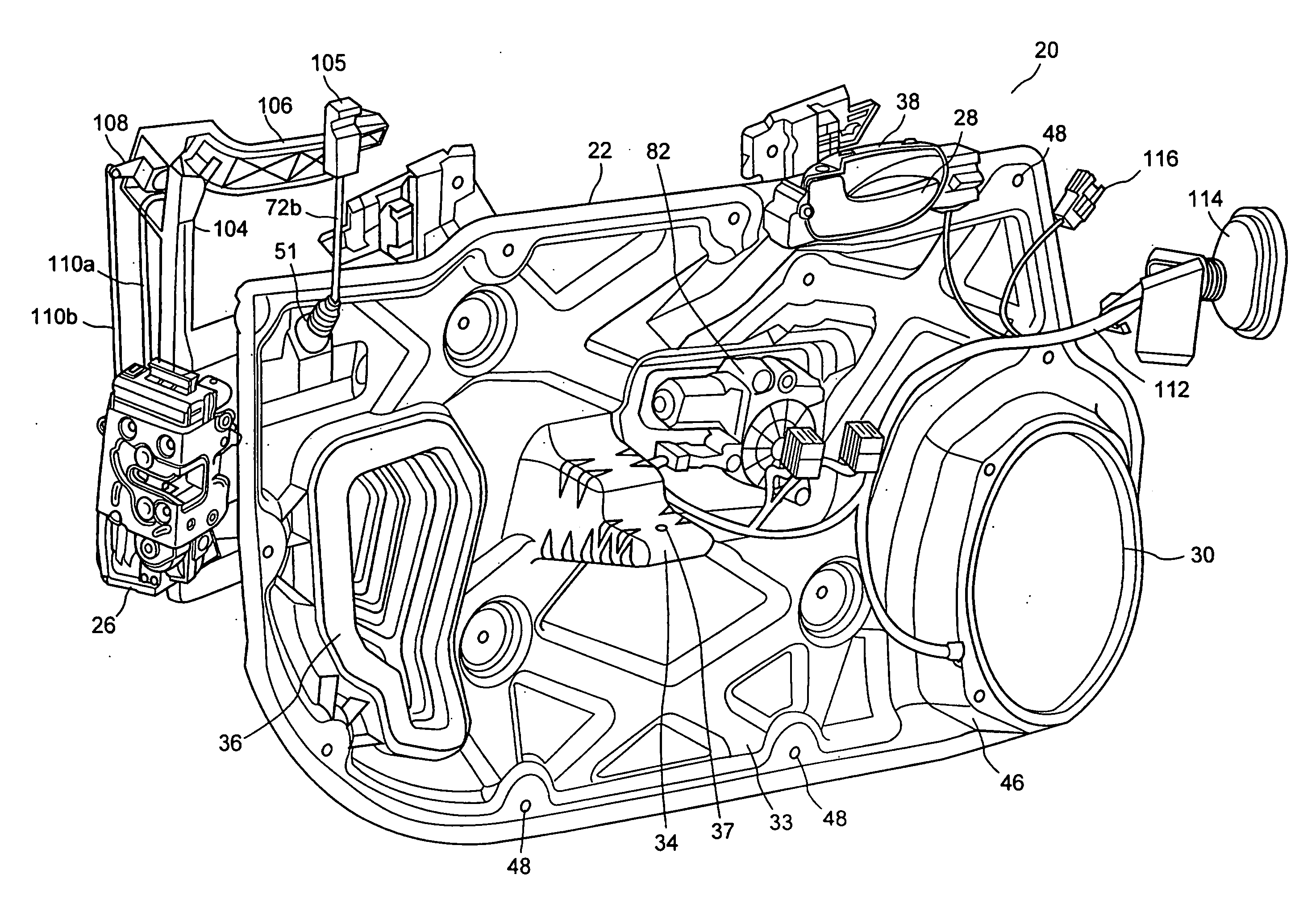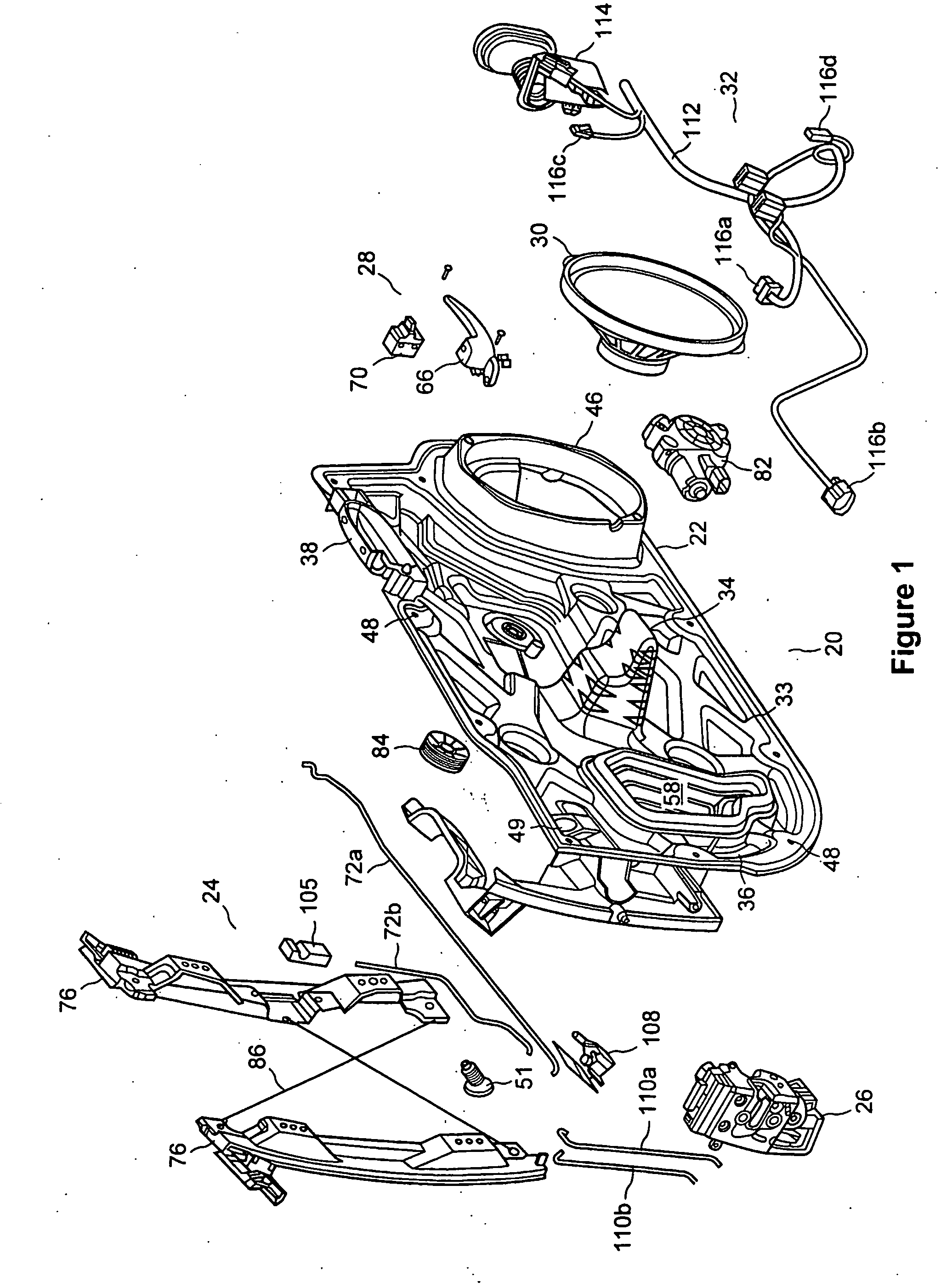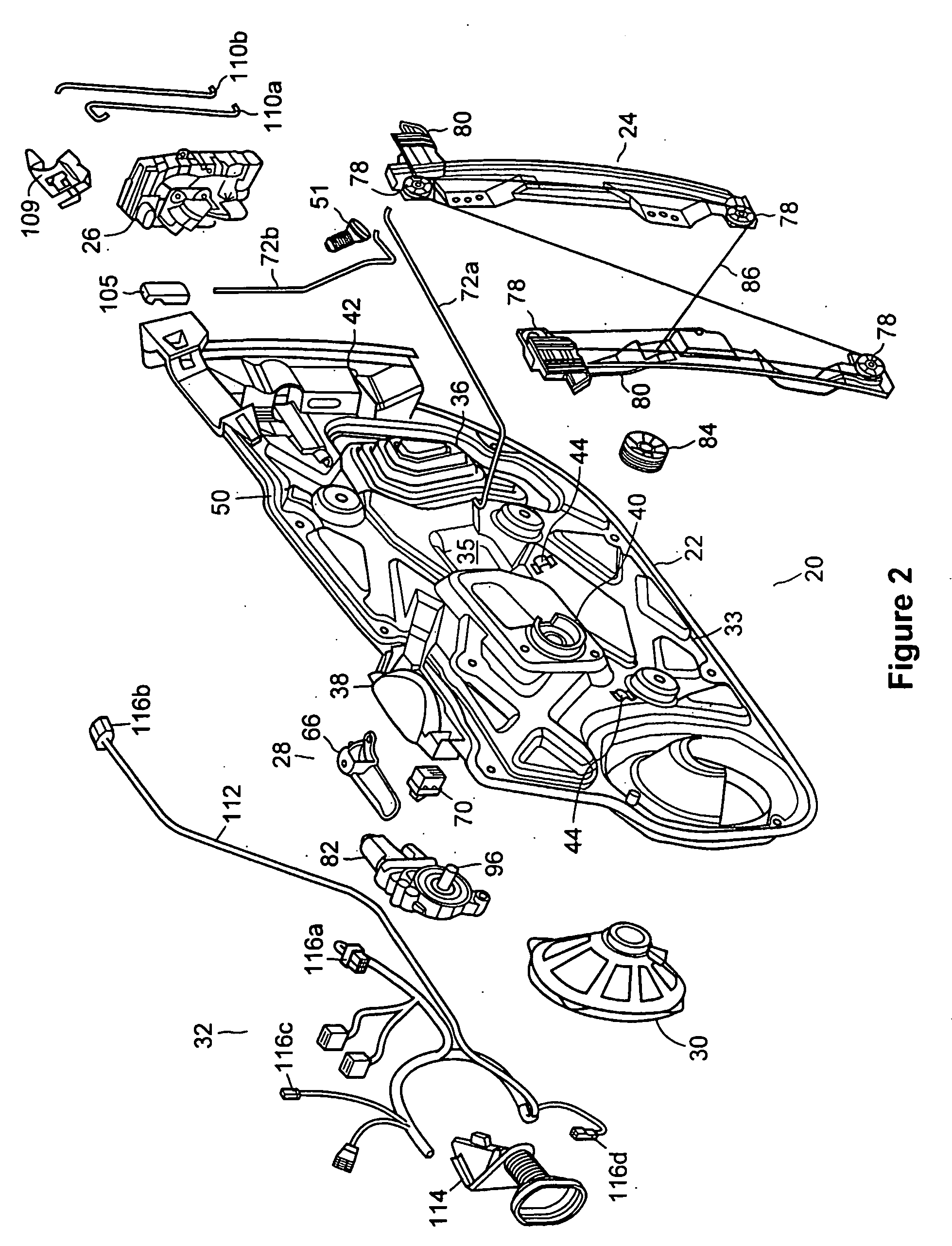Structural Door Module
a technology for building modules and doors, applied in the direction of doors, roofs, transportation and packaging, etc., can solve the problems of high assembly cycle required for assembling doors, hardware and safety components, and less protection for vehicle occupants from side-impact collisions than front or rear-end collisions
- Summary
- Abstract
- Description
- Claims
- Application Information
AI Technical Summary
Benefits of technology
Problems solved by technology
Method used
Image
Examples
Embodiment Construction
[0032]FIGS. 1-8 show a first embodiment of the invention, and FIGS. 9-13 shows a second embodiment of the invention.
[0033]FIGS. 1 to 4 show a structural door module 20, which includes a plurality of hardware subsystems mounted to or otherwise integrated with a carrier plate 22, and discussed in greater detail below. FIGS. 1 to 2 show an exploded perspective view of the structural door module 20 and FIGS. 3 to 4 are an assembly view of the structural door module 20. Carrier plate 22 provides opposing first and second surface, hereafter referred to as the “dryside” and “wetside” surfaces respectively. Shown in FIG. 1, the dryside surface of carrier plate 22 faces the interior of the vehicle when mounted to a motor vehicle door body (not shown). Conversely, as shown in FIG. 2, the wetside surface of carrier plate 22 faces the exterior of the vehicle when mounted to a motor vehicle door body (not shown). Hardware subsystems that are typically pre-mounted to carrier plate 22 include a wi...
PUM
 Login to View More
Login to View More Abstract
Description
Claims
Application Information
 Login to View More
Login to View More - R&D
- Intellectual Property
- Life Sciences
- Materials
- Tech Scout
- Unparalleled Data Quality
- Higher Quality Content
- 60% Fewer Hallucinations
Browse by: Latest US Patents, China's latest patents, Technical Efficacy Thesaurus, Application Domain, Technology Topic, Popular Technical Reports.
© 2025 PatSnap. All rights reserved.Legal|Privacy policy|Modern Slavery Act Transparency Statement|Sitemap|About US| Contact US: help@patsnap.com



